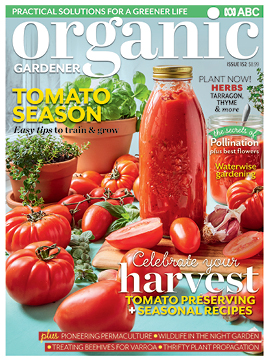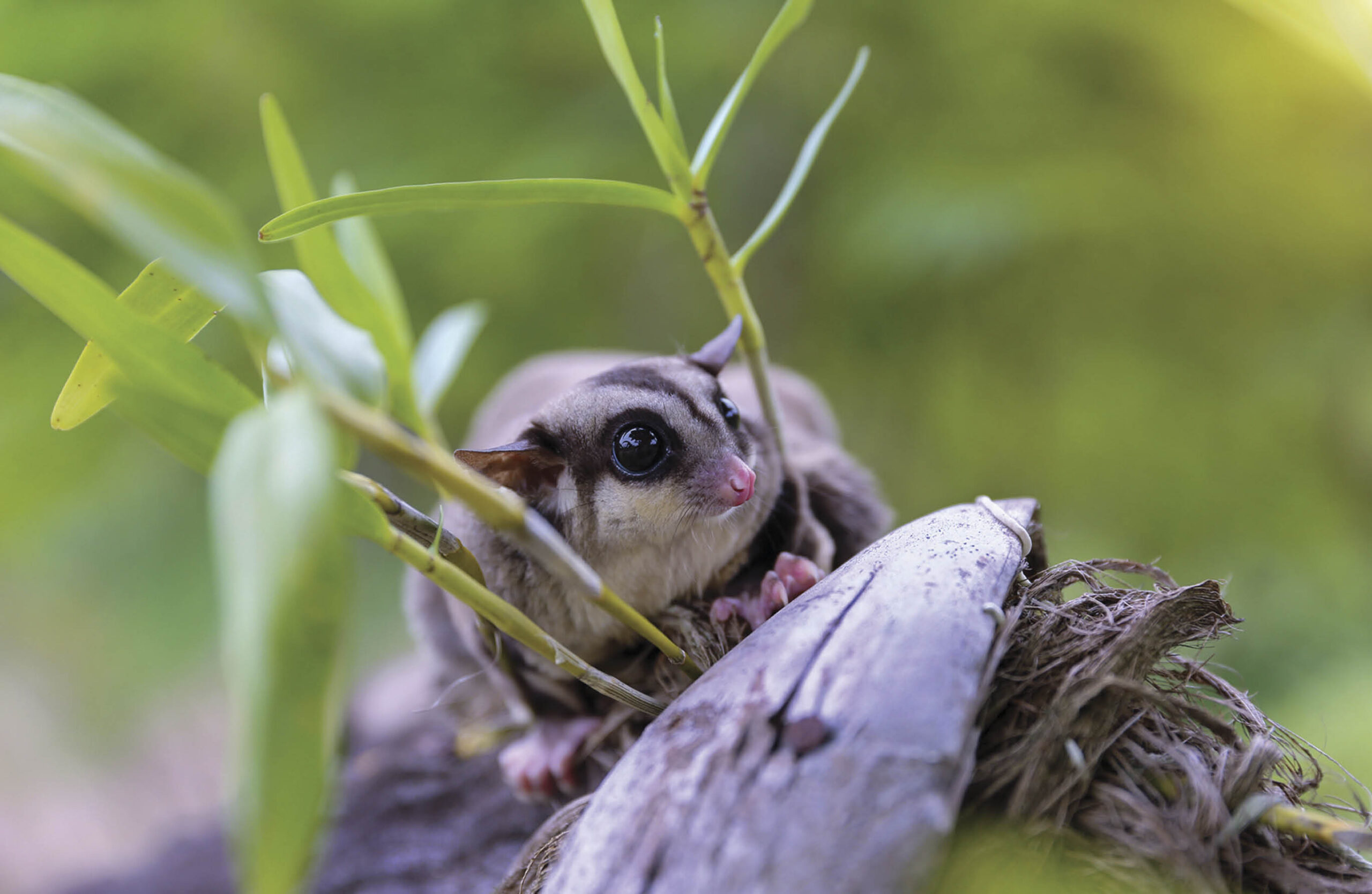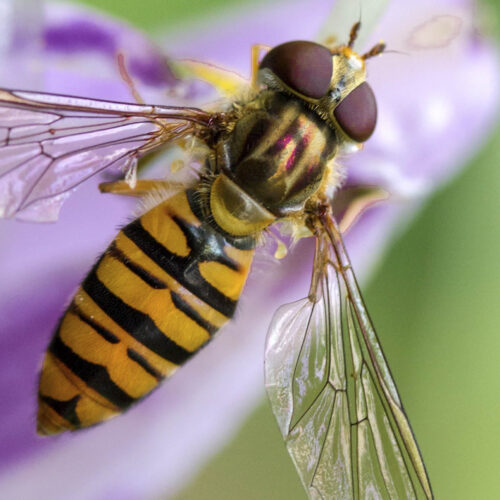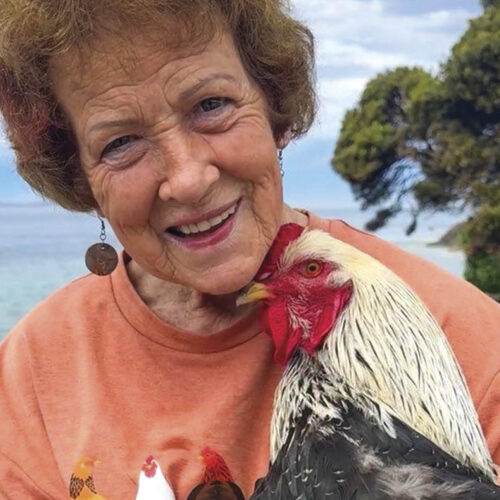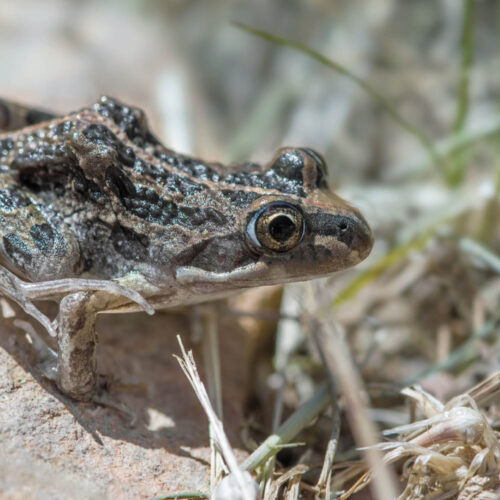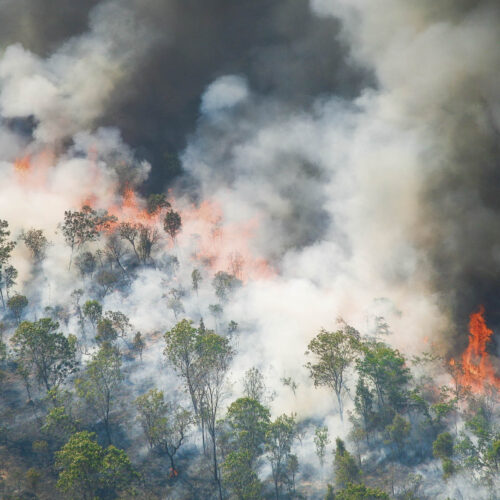Helping native animals survive
2024-09-16T18:05:53+10:00
At night, our gardens can become a hive of activity. Discover how to help nocturnal native animals stay healthy in an urban environment.
Even the most urban areas of Australia experience a lot of nocturnal activity. In the parklands and backyards of our big cities, tawny frogmouths hunt critters by night (these birds aren’t owls but are part of another family of nocturnal hunting birds known as nightjars). Insects, small rodents and skinks that thrive in urban environments present a wonderful smorgasbord for tawny frogmouths to live on.
In the botanic gardens and parks along the east coast, Australia’s biggest owl, the endangered powerful owl, can sometimes be sighted. These birds roost by day in thick-canopied trees, and, by night, hunt ringtails, brushtails, and take advantage of the urban rat and mouse population.
Close around our homes, brushtail possums take advantage of the roofs of sheds and houses to sleep by day, emerging to give demoniac calls after dark.
You might even be directly cohabitating with common house geckos that call ‘chip’ from your walls or ceiling. Some frogs occupy backyard ponds, including the striped marsh frog and Peron’s tree frog (aka ‘maniacal cackle frog’). Around my home, I’ve been lucky to encounter several resident frogs, including one enormous spotted marsh frog that was living amongst the overgrown grasses around our bird bath. Here’s some tips on helping out our native animals in your garden.
Go wild
Letting grasses grow wild – especially native grasses and rushes – in a few pockets of your garden is a great way to provide undisturbed habitat for frogs, skinks and insects. These unused corners of your garden can come alive with the delightful calls of the eastern sign-bearing froglets and eastern banjo frogs (aka ‘pobblebonks’).
Katydids (‘bush crickets’) explore backyard vegetation after dark, rubbing their wings together to give a cricket-like call (known as stridulating), adding to the chorus that shapes our summer evenings. Many Australian cicadas emerge from the soil beneath native wattles and eucalypts at night to shed their final nymphal skin and sing for a mate (including greengrocer and redeye cicadas), a reminder that old-growth trees harbour more than nesting sites, but also are a crucial substrate for many kinds of insects and fungi. The presence of old-growth trees in suburbs has many positive downstream ecological effects, so I highly recommend looking after your local old trees, and establishing new generations of long-lived native trees in the area to ensure the longevity of habitat for both diurnal and nocturnal animals.
Swamp and bush rats (native rats), any of 15 antechinus species (small, insectivorous, mouse-like mammals), wombats and platypus are just a few other beautiful nocturnal animals that rely on protected bushland, inviting gardens (with pockets of native shrubs and grasses) and waterways to survive.
Given that over 80 per cent of Australia’s population lives in urban areas, being able to see wild nocturnal animals thriving alongside us is an important means of connecting with the landscape, despite our highly urbanised lifestyles.
How to help native animals
- Create a garden with multiple stories of native vegetation, with a particular focus on protecting nearby old-growth trees.
- Put in a frog pond – great for hard to reach areas of a garden.
- Put up nesting boxes for powerful and sooty owls, boobooks, possums and antechinus, and for microbats (these little beauties eat insects, including mosquitoes in the summer).
- Keep your cats enclosed as they are destructive killers of birds and wildlife.
- Avoid using rat poisons that wildlife may consume.
You can read Georgia Angus’s full article about our night-time gardens in the Spring 2024 issue (OG 152) — you can also subscribe and get the most recent issues delivered to your door!
